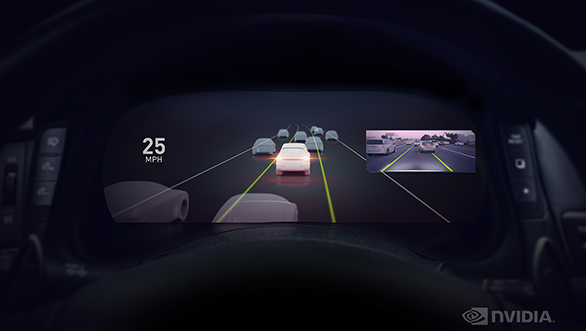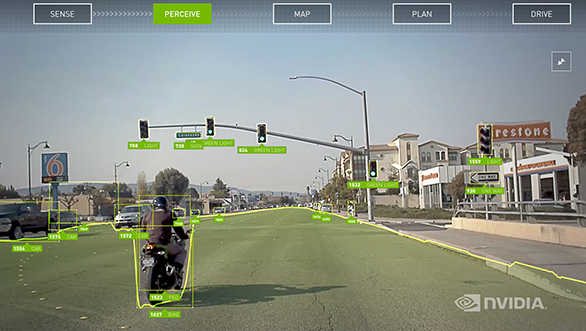CES 2019: NVIDIA DRIVE AutoPilot with Level 2+ automated driving system announced
Popular computer graphics hardware brand, NVIDIA has recently introduced the DRIVE AutoPilot, which is claimed to be the world's first commercially available Level 2+ automated driving system. The brand maintains that the AI technologies will enable supervised self-driving vehicles to go into production by next year. Automotive suppliers, Continental and ZF announced self-driving solutions based on this AutoPilot at the 2019 Consumer Electronic Show. It has also been confirmed that the automated driving technology showcased at the CES 2019 will enter production in 2020.

The DRIVE AutoPilot comes with Xavier system-on-a-chip (SoC) processors paired with high end software to process many deep neural networks (DNNs) for perception as well as complete surround camera sensor data from outside the vehicle and inside the cabin. Xavier is the world's first automotive-grade processor for autonomous driving and is in production today. The combination of Xavier and NVIDIA sofware enables full self-driving autopilot capabilities, including highway merge, lane change, lane splits and personal mapping. Inside the cabin, features include driver monitoring, AI copilot capabilities and advanced in-cabin visualisation of the vehicle's computer vision system. NVIDIA states the AutoPilot is a part of the flexible NVIDIA Drive platform that is being used by hundreds of companies worldwide to build autonomous vehicle solutions that increase road safety while reducing driver fatigue and stress on long drives or in stop-and-go traffic. The new Level 2+ system complements the NVIDIA DRIVE AGX Pegasus system that provides Level 5 capabilities for robotaxis. Additionally, this addresses the limitations of existing Level 2 ADAS systems, which a recent insurance institute for highway safety study showed offer inconsistent vehicle detections and poor ability to stay within lanes on curvy or hilly roads, resulting in a high occurrence of system disengagements where the driver abruptly had to take control.

"Lane keeping and adaptive cruise control systems on the market today are simply not living up to the expectations of consumers," said Dominique Bonte, vice president of Automotive Research at ABI Research. "The high-performance AI solutions from NVIDIA will deliver more effective active safety and more reliable automated driving systems in the near future." In addition, within the vehicle, DRIVE IX intelligent experience software enables occupant monitoring to detect distracted or drowsy drivers and provide alerts, or take corrective action if needed. It is also used to create intelligent user experiences, including the new ability for augmented reality. Displaying a visualisation of the surrounding environment sensed by the vehicle, as well as planned route, instills trust in the system.
Related Stories
Top Stories
Latest Videos
Most Popular
- Budget Sportbike Showdown: Kawasaki Ninja 500 vs Aprilia RS 457 vs Yamaha YZF-R3
- Mumbai-Pune Expressway speed restrictions updated
- Upcoming Mahindra XUV 3XO: All you need to know
- 2014 Triumph Daytona 675 vs 2024 Kawasaki ZX6R - A Decade of Evolution in Supersport Motorcycles
- 2024 Hyundai Creta vs Toyota Urban Cruiser Hyryder vs Skoda Kushaq comparison review - the hype is real?














